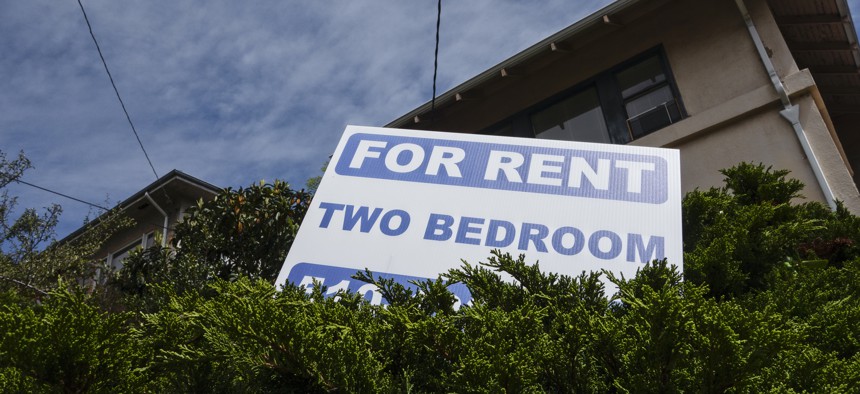Minimum Wage Workers Cannot Afford a 2-bedroom Rental Home Anywhere

Thomas Winz via Getty Images
Plus, these workers can’t rent a one bedroom in 91% of U.S. counties, according to a new report.
Amid record-breaking rent increases, it’s nearly impossible for low-wage workers to afford rental homes anywhere in the United States, according to a new report from the National Low Income Housing Coalition.
Full-time minimum-wage workers cannot afford a modest, two-bedroom rental house anywhere in the county. And a modest, one-bedroom rental home is out of reach for these workers in 91% of U.S. counties, according to the report.
While the federal minimum wage remains $7.25 per hour, a worker would need to make $21.25 an hour to afford a one-bedroom home without spending more than 30% of their income on housing, according to the report. For a two-bedroom home, that rate is $25.82.
Across the country, rents rose 18% between the first quarters of 2021 and 2022, according to the report. Out of 345 metropolitan counties, all but two saw an increase in rental prices since last year.
Along with rent, prices for goods also are increasing, and 11 million extremely low-income renter households are facing the challenge of affording other basic necessities, such as food, medical services, transportation and child care, the report said.
Meanwhile, temporary housing policy measures like emergency rental assistance and eviction moratoriums–which were rolled out to help households during the Covid-19 pandemic–are coming to an end.
The gap between income and housing costs is largest for people of color, particularly women of color, according to the report. The median wage for Black and Latino people is approximately $6 less than that for white workers, the report said.
Additionally, historic and discriminatory housing policies have long made accessing decent, affordable housing challenging, and continue to do so, the report said.
Among renters, more than half of Black and Latino households are spending more than 30% of their incomes on housing, compared to 43% of white households. More than 70% of Black and Latina women earn an hourly wage that is less than the one-bedroom housing wage.
The housing crisis has been long in the making, said Diane Yentel, president and CEO of NLIHC in the report.
“Decades of chronic underfunding for housing assistance have resulted in a housing-lottery system, where only 25 percent of eligible households receive the housing assistance they need,” Yentel said. “With rents rising rapidly, homelessness worsening, and millions of families struggling to stay housed, federal investments in expanding proven solutions – like Housing Choice Vouchers, the national Housing Trust Fund, and public housing – are badly needed and long overdue.”
Molly Bolan is an assistant editor for Route Fifty.
NEXT STORY: New 5-State Pilot Will Link Low-Income Households to Solar Power






